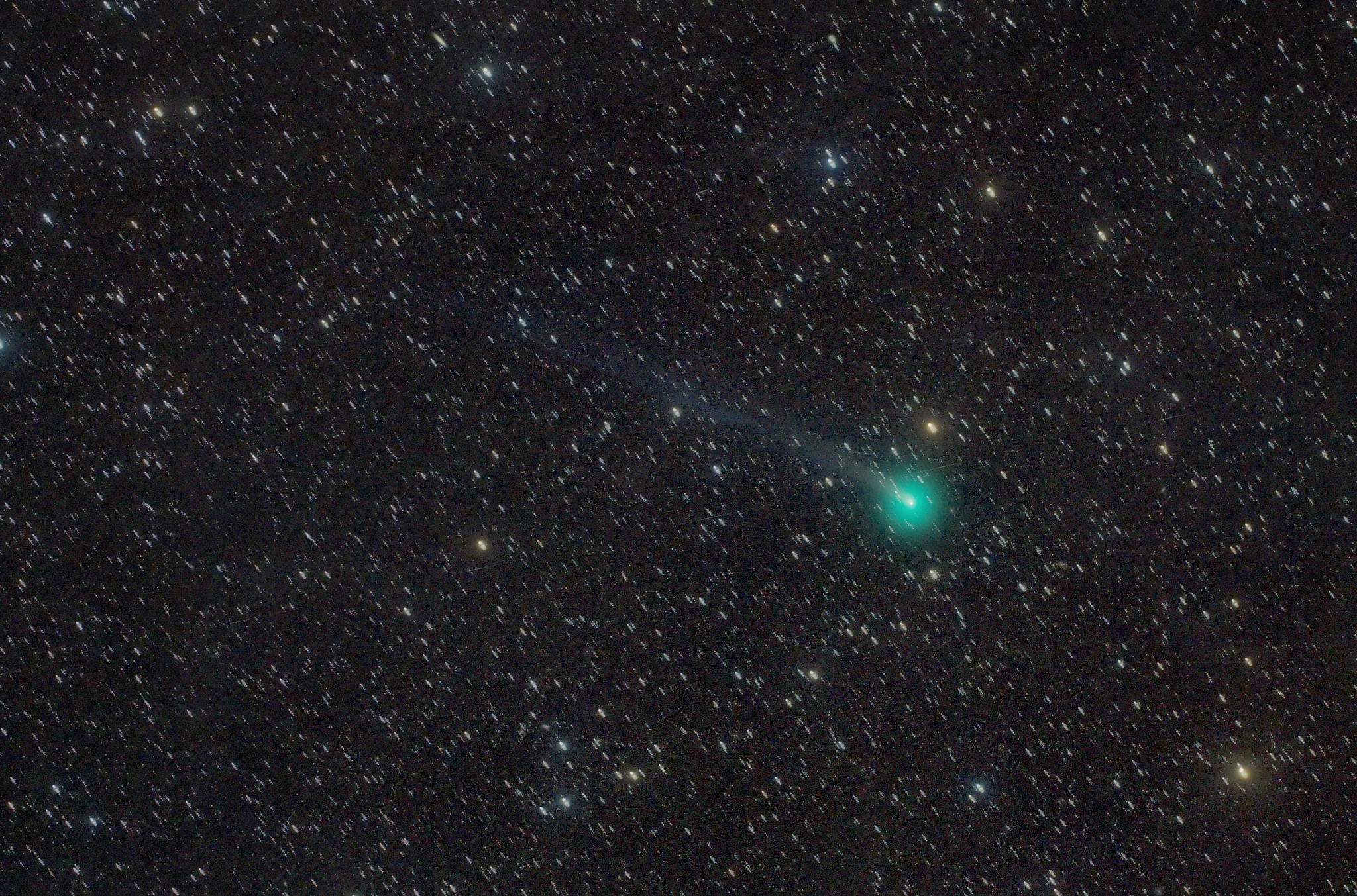Ready for one of the better binocular comets of 2016? Emerging from behind the Sun and a surprise outburst in January, Comet C/2013 X1 PanSTARRS is about to put on its summer show. The waning crescent Moon just crossed paths with the comet in the dawn sky on its way to New on May 6th, and the time to start tracking it is now as it plunges southward across the ecliptic this weekend.
Discovered on December 4th 2013 by the prolific PanSTARRS 1 survey, early signs suggested that Comet C/2013 X1 PanSTARRS would be special. First, it was sighted 8.9 AU from the Sun, just inside the orbit of Saturn. This is a good distance for a comet discovery, suggesting an intrinsically bright comet. We’re typically monitoring the IAU’s naming list for new comet discoveries, and can remember way back in late 2013 noting that this particular comet might just be something of note in mid-2016.
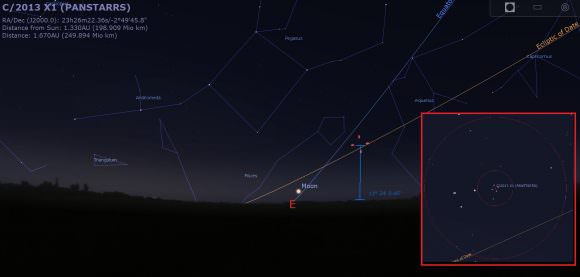
And here we are. The good news is, X1 PanSTARRS is brightening ahead of predictions, not unusual for a comet post-perihelion. Updated observations for the comet on the Comet Observer’s Database (COBS) place X1 PanSTARRS at brighter than magnitude +8 ‘with a bullet.’ It’ll soon surpass Comet 252/P LINEAR as the brightest currently observable comet in the sky.
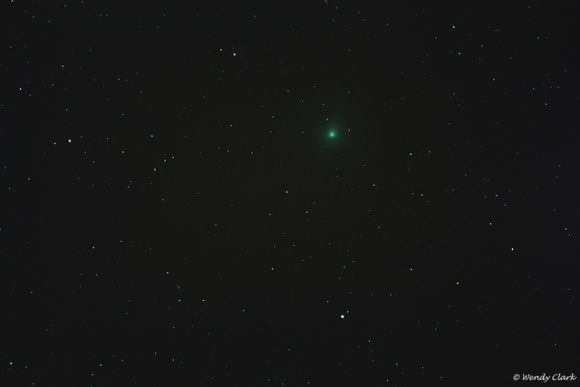
Currently, Comet X1 PanSTARRS is located just below the circlet of Pisces asterism. The comet is visible in the dawn through May, and is currently observable from 35 north latitude to 70 degrees south. The comet will ride high in the southern hemisphere in the coming months, and low to the south through the summer for folks up north. C/2013 X1 PanSTARRS will transition to the evening skies in late June as it crosses its opposition point at 180 degrees elongation from the Sun.
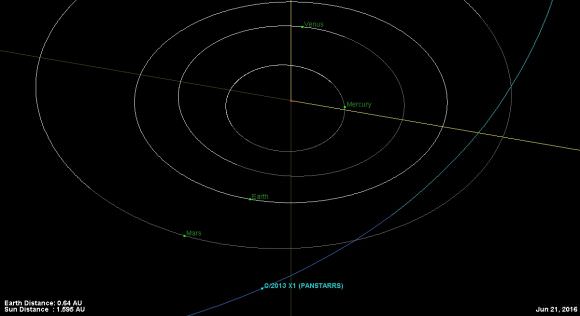
Here’s the breakdown for the 2016 summer apparition of Comet C/2013 X1 PanSTARRS, with key dates to watch out for.
The rules: all passes noted are less than one degree of angular separation (about twice the diameter of the Full Moon) unless stated otherwise, and stars denoted are all brighter than +5th magnitude.
Comet C/2013 X1 PanSTARRS should stay bright until October 1st, b when it falls below +10th magnitude… but remember, comets are fickle beasts, and X1 PanSTARRS could always perform above or below expectations.
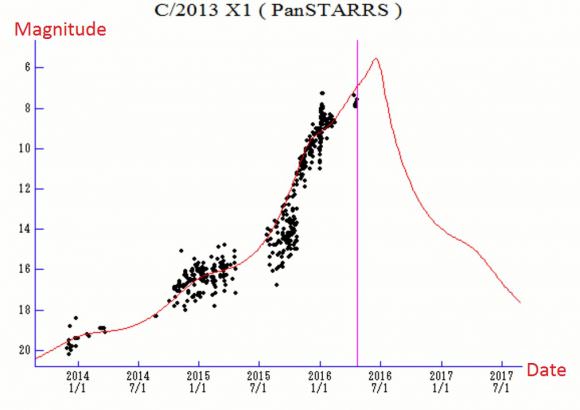
The comet is currently shining at +7.6 magnitude, and as of writing this, is brightening ahead of predictions.
X1 PanSTARRS passed perihelion a few weeks ago on April 20th, 2016 at 1.314 AU (195.5 million kilometers) from the Sun.
Here’s the rundown, day-by-day:
May
3- The waning crescent Moon passes less than an degree from the comet, occulting it for the Antarctic.
6- Enters Aquarius.
8- Crosses the ecliptic plane southward.
15- Passes +4.2 magnitude Phi Aquarii.
17- Passes +4.9 magnitude Chi Aquarii.
23- Passes 4 degrees from +7.9 magnitude Neptune.
29- Passes +3.2 Skat (Delta Aquarii).
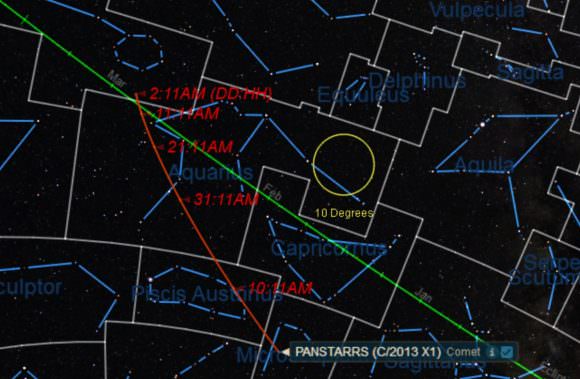
June
1- Passes +4.6 magnitude 66 Aquarii.
4- Photo Op: passes just 15′ from NGC 7293 (The Helix Nebula).
8- Enters Piscis Austrinus.
15- Enters Microscopium.
19- Enters Sagittarius.
21- Closest to Earth, at 0.64 AU (95.2 million kilometers) distant, and moving at over 3 degrees a day.
22- Enters Telescopium.
26- Passes +4.1 Zeta Telescopium.
26- Reaches opposition.
27- Enters Ara and passes +3.6 Theta Arae. Reaches its farthest declination south at -49 degrees.
28- Passes +2.8 magnitude Alpha Arae.
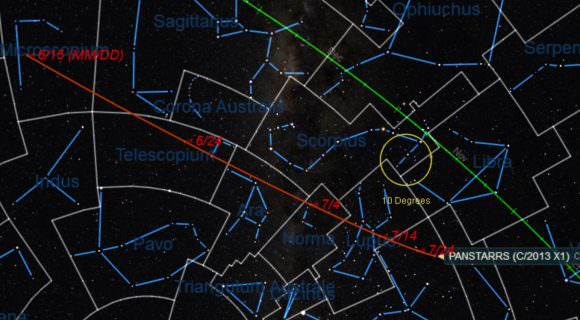
July
1- Could briefly top naked eye brightness from a good dark sky site, at greater than magnitude +6.
3- Crosses the galactic equator northward and enters the constellation Norma.
4- Passes +4.4 magnitude Epsilon Normae.
6- Passes +4.6 magnitude Delta Normae.
9- Enters Lupus and passes near +4.3 magnitude Omega Lupi.
11-Passes 5 degrees from the +7.5 magnitude globular cluster NGC 5986.
12- Passes +3.2 magnitude Delta Lupi.
16- Enters Centaurus.
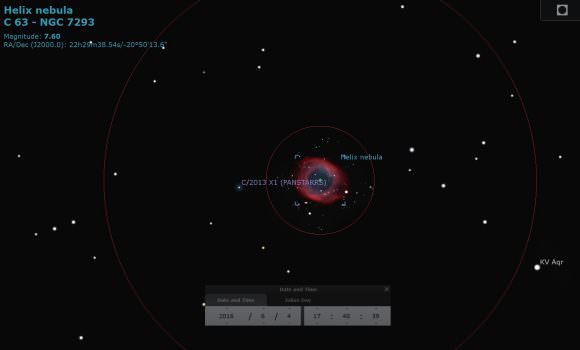
August
13- Enters Hydra.
September
3- Passes +4.7 magnitude 51 Hydrae.
October
1- Drops below +10th magnitude?
Binoculars are your friend in any comet hunting quest brighter than +10th magnitude. Remember, all that ‘brightness’ is spread out over the apparent surface area of its coma, making it appear visually fainter than the quoted magnitude. Slowly sweeping the skies with the low power field of view afforded by binoculars helps, as does a passage near a bright guide star (see the list above).
New comet 2013 X1 PanSTARRS is currently projected to be a +7th mag AM object. The view May 3rd 2016: pic.twitter.com/DvCer32il6
— David Dickinson (@Astroguyz) December 7, 2013
For northern hemisphere observers, the time to observe this comet is now, before it takes its southern plunge. Unfortunately, there aren’t any other favorable comets forecast to break +10 magnitude in 2016 in the observational pipeline… yet. Remember, the next ‘big one’ could appear at any time!

